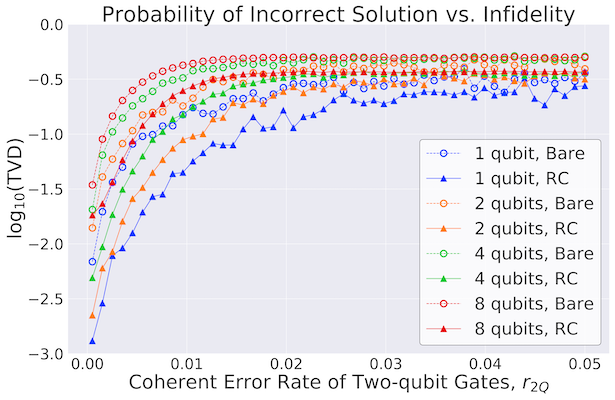This is demonstrated in the plot above for single- and multi-qubit random circuits of depth 200 gates (100 cycles of easy/hard gates), where we plot the log of the TVD as a function of the error rate of two-qubit gates, which are simulated as an over-rotation by some angle to give the error rate listed for each instance of a gate in a circuit. (All single-qubit gates have an infidelity of 1/10 of that of the two-qubit gates.) Each bare data point is the average of 30 different random circuits, and each RC data point is the average of 100 RC circuits for each bare circuit. This trend suggests that while RC can be very useful in improving algorithms in the NISQ era, it will continue to be a useful protocol beyond NISQ. (Similar results were also demonstrated in the original theory paper: https://arxiv.org/pdf/1512.01098.pdf.)
Our Organization
